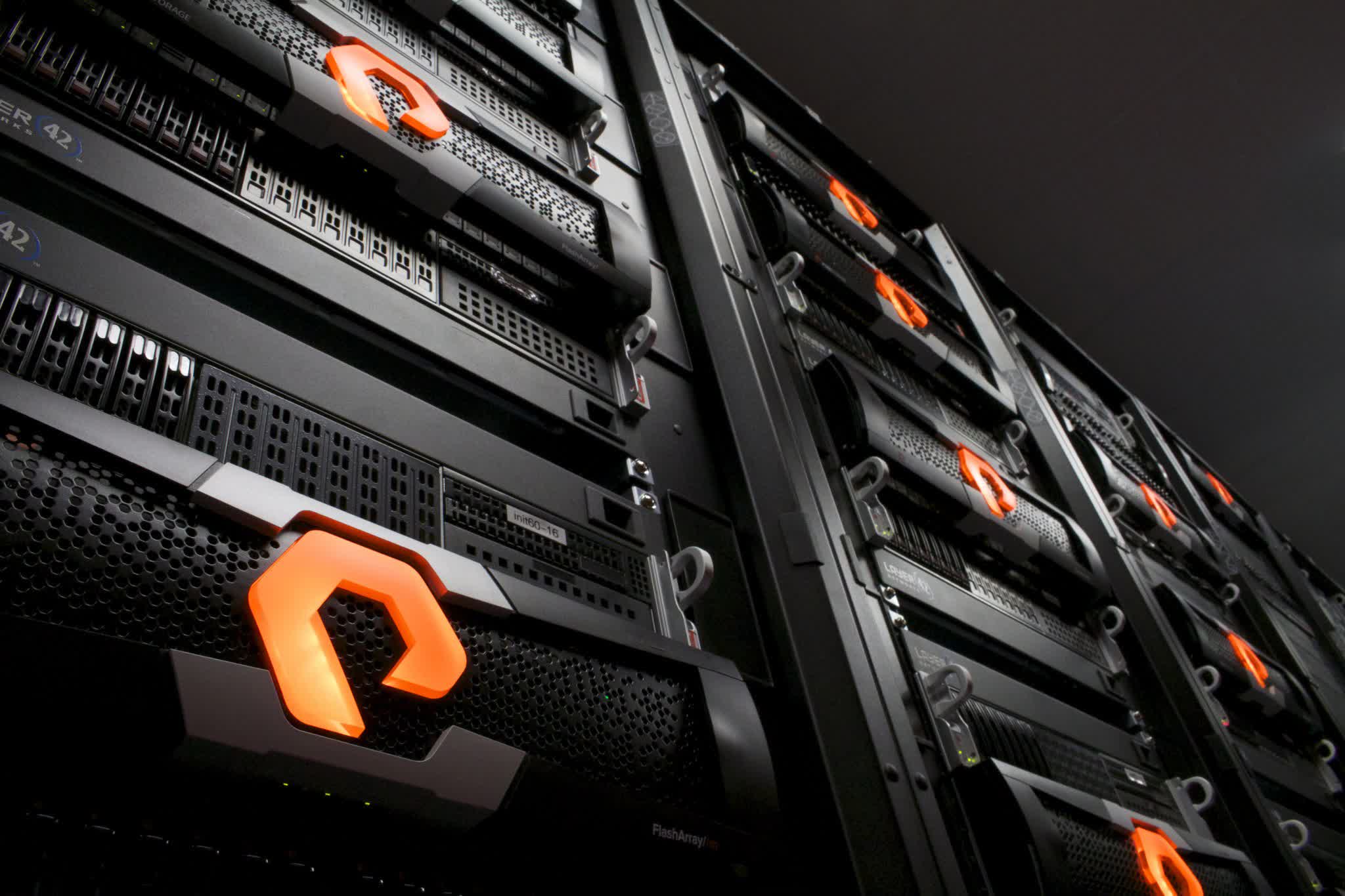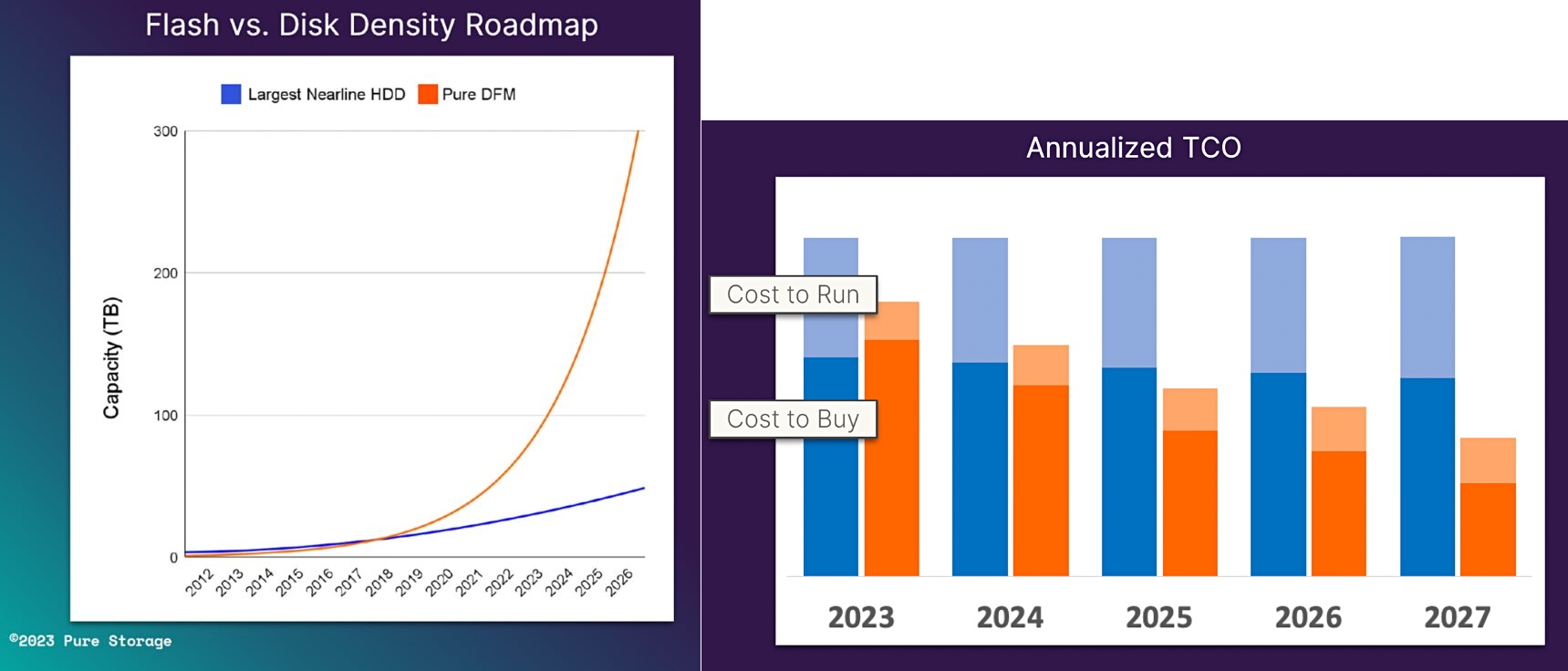The big picture: As consumers switch to solid-state drives for their speed and reliability, manufacturers keep pushing spinning disk drives to bring capacity higher and cost-per-gigabyte lower. One flash supplier believes it can handily outpace hard drives over the next few years.

Flash storage provider Pure Storage told outlet Blocks & Files this week that it hopes to offer 300TB drives before or by 2026. That would be at least a six-fold increase from its current 24TB and 48TB drives.
Pure Storage is optimistic regarding that pace due to the speed of recent 3D NAND advancements. Last year, Western Digital revealed plans to begin manufacturing 162-layer NAND and reach over 200 layers by 2024. Micron started shipping 232-layer NAND last year, while Samsung hopes to hit 1,000 layers by the close of the decade.
Alex McMullan, Pure Storage's CTO, told Blocks & Files that the company currently receives 112 and 160-layer NAND from its chip suppliers, and they have plans to reach 400-500 layers over the next few years, making ever-larger drives possible. Western Digital also wants to hit 500 layers within this decade.
Click to enlarge
Pure Storage specializes in SSDs comprised of NAND chips running its proprietary FlashArray and FlashBlade operating systems. The company calls these products Direct Flash Modules (DFMs).
Pure Storage shared a roadmap showing the enlargement of DFM capacity since 2012, steadily climbing until starting a sharp incline around 2021. The company hopes that curve can hold, bringing it to 300TB in the next three years.
It also shared a chart illustrating its hopes that its products' Total Cost of Ownership (TCO) will continue falling against HDDs between now and 2027. The chart projects that HDDs will remain static in this area while flash purchase prices could fall. Running flash storage is already cheaper than hard disc storage.
Notably, Pure Storage's projections fly past those of companies focusing on high-capacity HDDs like Seagate. With HAMR technology, Seagate plans to start shipping 30TB HDDs this year. The company hopes to hit 40TB by 2024 or 2025, 50TB by 2026, and 100TB by 2030.
McMullan promised multiple significant announcements at Pure Storage's 2023 Accelerate conference in Las Vegas, lasting from June 14 to June 16.
https://www.techspot.com/news/97799-supplier-aims-300tb-flash-drives-2026.html
